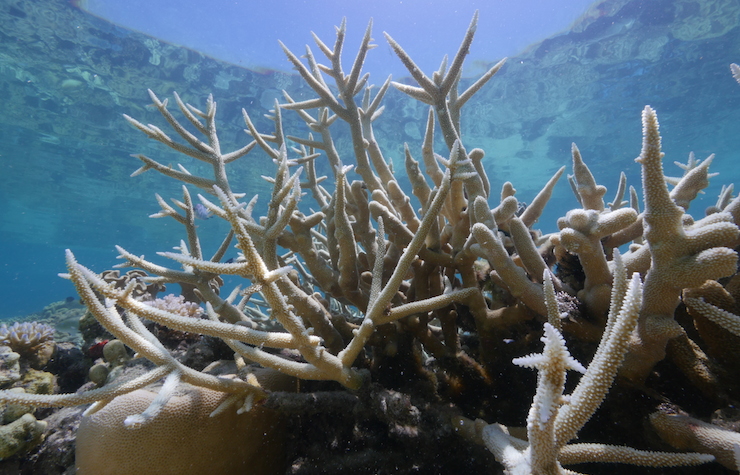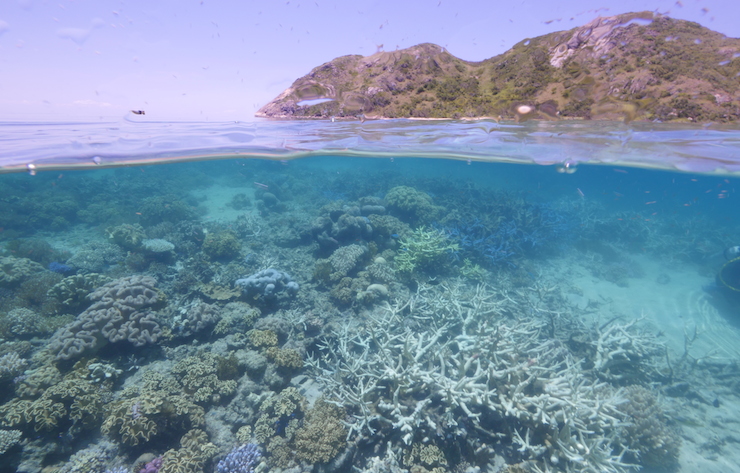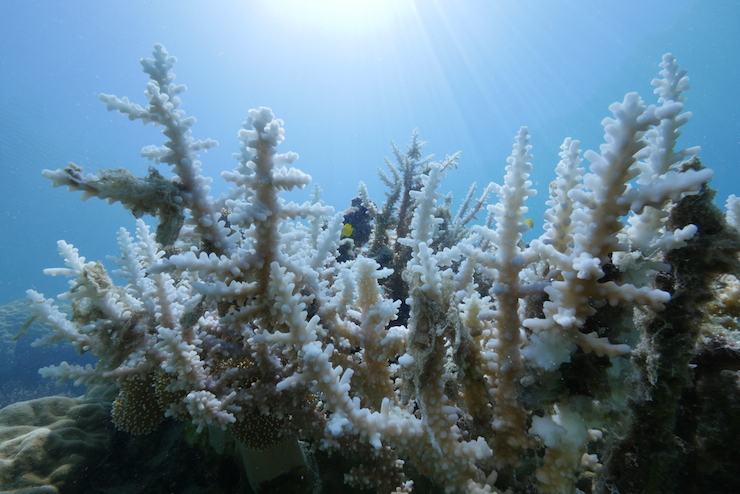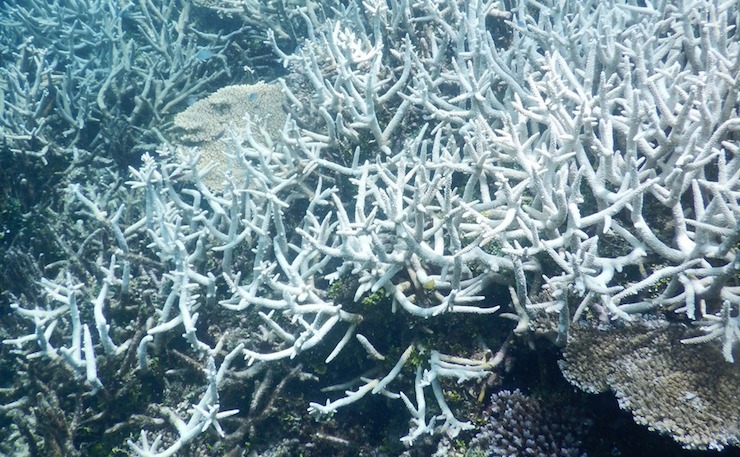The Great Barrier Reef Marine Park Authority has sounded the alarm as warm waters drifts west from the Pacific and drives a coral bleaching event that threatens to kill off parts of the natural wonder.
Between 5 and 10 per cent of the Great Barrier Reef is currently experiencing some level of bleaching, said Professor Terry Hughes, Director of the Australian Research Council’s Centre of Excellence for Coral Reef Studies.
However the phenomenon has not reached the disastrous levels seen in 1998 and 2002, when bleaching plagued 50 per cent of the Reef and proved fatal for around 10 per cent of corals.
Exacerbated by this year’s powerful El Nino weather pattern, warm waters are moving west, and the serious coral bleaching that’s recently affected Hawaii and Fiji is now being visited upon the Great Barrier Reef.
Yesterday reports of widespread bleaching emerged from Lizard Island, off the Queensland coast north of Cairns. Professor Hughes said Lizard Island appears to be experiencing bleaching in up to 50 per cent of its corals.

More broadly, the James Cook University Professor said, “spotty bleaching along the length of the Great Barrier Reef” has affected between 5 and 10 per cent of corals so far.
He said this year’s El Nino event is driving hotter than average temperatures, and less cloud cover and wind, and creating “a perfect storm for causing coral bleaching”.
The phenomenon occurs when heat stress causes corals to expel tiny marine algae called zooxanthellae, which live inside their tissue and provide corals with much of their food and colour.
“With bleached coral, you’re actually looking at the skeleton through the transparent animal tissue once the algae has been expelled,” Prof. Hughes said.
Great Barrier Reef Marine Park Authority Chairman Dr Russell Reichelt said that “corals generally have a temperature limit, and the bleaching indicates they’re outside of their comfort zone”.
“At this stage, there appears to be low rates of coral mortality restricted to a small number of reefs, and most of the corals affected by bleaching are those that are particularly vulnerable to this type of event such as plate and branching corals,” Dr Reichelt said.
Prof Hughes said grim forecasts produced by America’s National Oceanic and Atmospheric Administration earlier this year have not yet been realised, and have been progressively downgraded as the warm season plays out.

“Once we get to April the cooling will accelerate and we should be past the danger zone,” Prof Hughes said.
“The weather this week has some cloud and the temperatures aren’t very high, so we might get a bit of a respite.
“On the other hand if in the week after next we get a late season very hot spell, it’ll drive the temperature back up.
“It’s quite late in the season for the Great Barrier Reef waters to accumulate much more heat, so if we’re lucky we will have dodged a bullet.”
Bleaching is expected to become worse over time though, Prof Hughes said. It’s a “man-made phenomenon” driven by climate change and “superimposed” on those that had already existed.
The root cause of bleaching, rising temperatures, will undoubtedly worsen as climate change pushes temperatures up. According to NOAA, 15 of the 16 hottest years on their 136 year record have occurred since the turn of the millennium.

“I think it’s quite confronting that we’ve now got to the stage that every El Nino event – and they happen every few years – is a threat to the Great Barrier Reef,” Prof Hughes said.
“Before climate change kicked in we simply never saw bleaching… so they basically represent a policy failure to manage the impact on coral reefs.”
The Great Barrier Reef has lost 50 per cent of its coral cover in the last three decades, and climate change is recognised by government scientists as the greatest threat to its ongoing survival.
Donate To New Matilda
New Matilda is a small, independent media outlet. We survive through reader contributions, and never losing a lawsuit. If you got something from this article, giving something back helps us to continue speaking truth to power. Every little bit counts.





